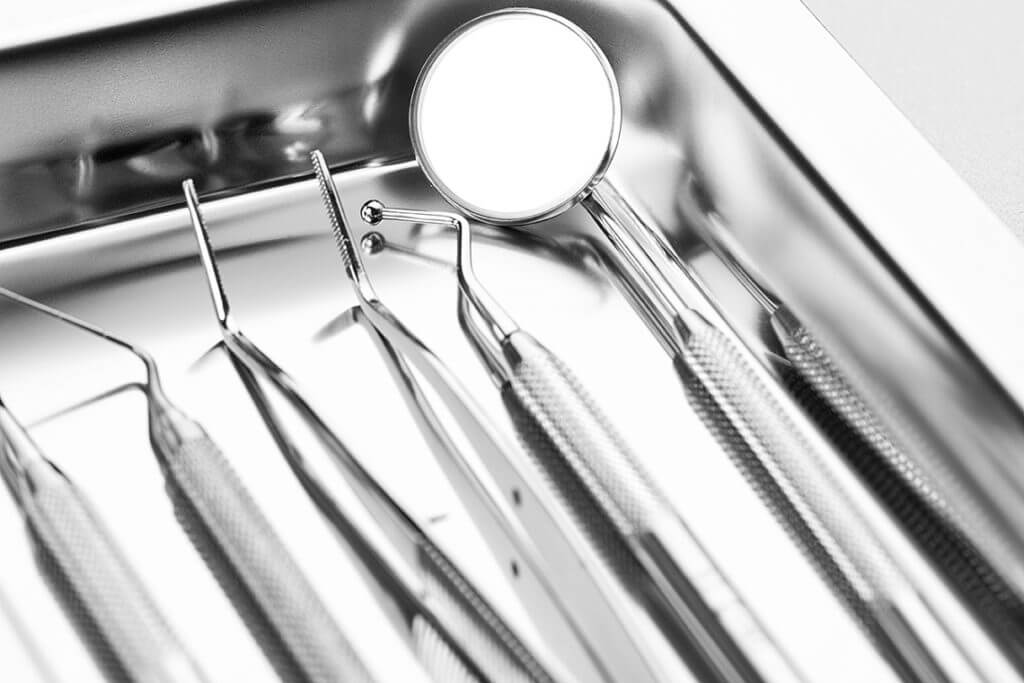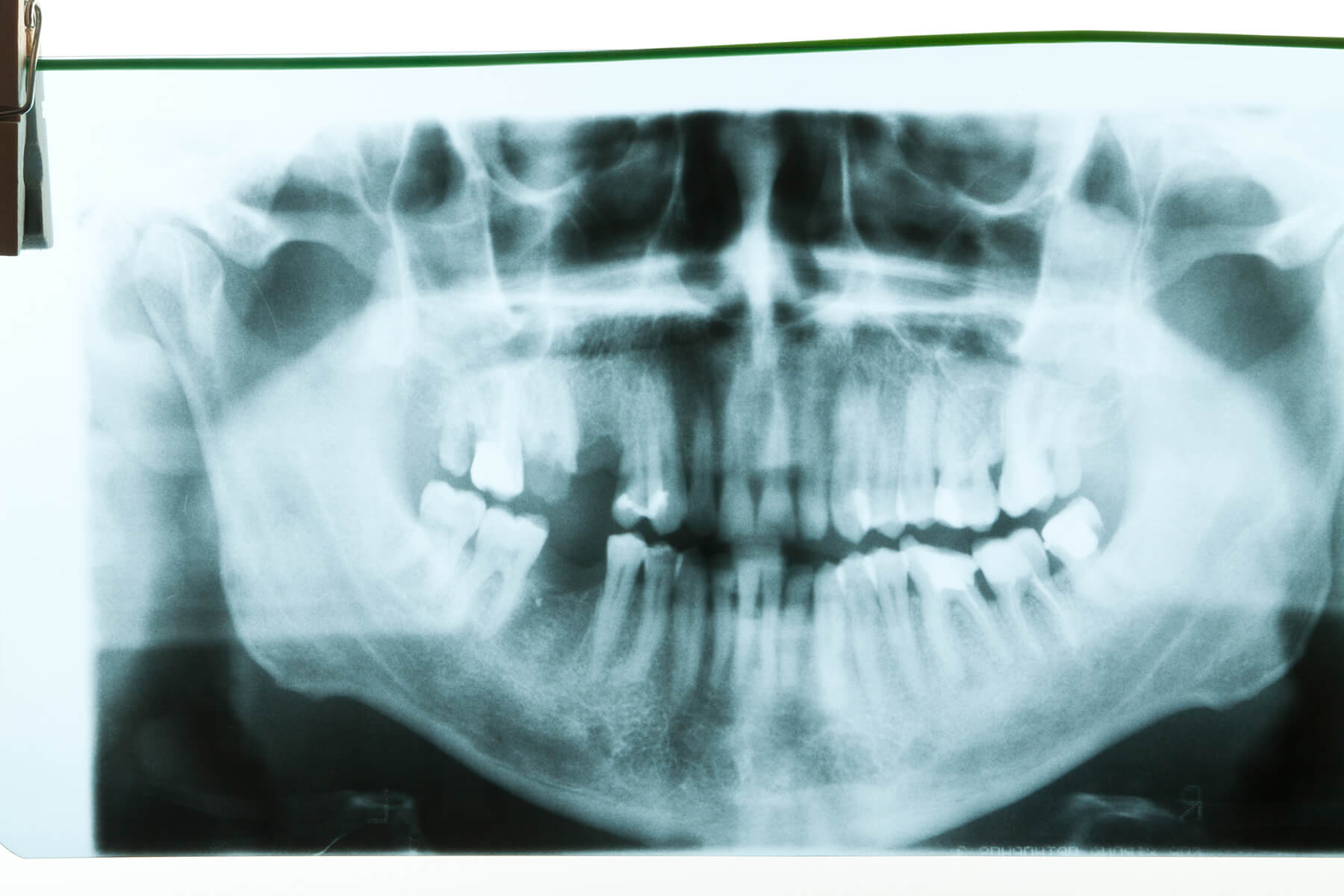When you have your first dental appointment at Parkcrest Dental Group, your doctor will likely perform a comprehensive dental exam. This is a way for your dentist in Springfield, MO, to fully assess your teeth, gums, and mouth. A complete dental exam is where your doctor looks at your teeth, takes an X-ray, and determines the best course of treatment, if any, that you may need.
Keep reading to learn more about what to expect during a comprehensive dental exam at Parkcrest Dental Group. As always, if you have any questions, reach out to us by calling (417) 887-1220 or filling out our contact form. We’re happy to help in any way we can!
Table of Contents
Importance of Regular Dental Exams
We believe a healthy smile starts with proactive care, and having a comprehensive dental exam every three years and regular checkups every six months are key pieces to your oral care puzzle. Dental exams provide insights and benefits that go far beyond your daily oral hygiene routine and cleanings. Here’s why a comprehensive dental exam every three years, and six-month checkups and cleanings from your dentist in Springfield, MO, are important:
Early Detection of Oral Health Issues
One of the most important aspects of a dental exam is early detection. Many dental issues, like cavities, gum disease, and even oral cancer, can develop without noticeable symptoms. A dentist is trained to spot the early warning signs of these problems before they turn into more pressing issues. Your Parkcrest dentist will check for any signs of decay, gum disease, or infections. By catching issues early, your doctor can often treat them quickly and more easily, saving you from more extensive and costly treatments down the road.
Preventative Care Is Key
Prevention is always better than a cure. Dental exams are a cornerstone of preventative care. During a six-month checkup, we’ll provide professional cleaning to remove sticky plaque and tartar that can’t be fully eliminated with regular brushing and flossing alone. This cleaning helps prevent cavities and gum disease, which are leading causes of tooth loss.
Personalized Oral Health Advice
Every mouth is different, which is why personalized advice from your dentist is so valuable. Your doctor will discuss your individual oral health needs and offer guidance on how to maintain or improve your dental hygiene. Whether you need help with sensitive teeth, dry mouth, or finding the right toothpaste, we are here to provide solutions tailored to you.
Protecting Your Overall Health
Your oral health is directly connected to your overall health. Poor oral hygiene has been linked to serious conditions like heart disease, diabetes, and respiratory infections. By keeping your teeth and gums healthy, you’re also taking a significant step toward maintaining your general well-being. Regular dental exams can even help detect other health issues, as many systemic conditions first manifest in the mouth.
Initial Consultation
A comprehensive dental exam includes a conversation between you and your doctor. Dentists are specially trained to identify any difficulties that may arise from someone’s medical history. Certain health conditions and medications can impact your oral health or dental treatments.
You already filled out your medical history report as a new patient. Based on this form, your dentist may ask you about any chronic conditions like diabetes, heart disease, respiratory issues, or asthma. The dentist will also ask you and talk to you about any allergies you might have, particularly to certain medications. They will also discuss any current medications you are taking.
What is your dental history? Did you have braces in the past? Were your wisdom teeth removed? Did you have any dental emergencies?
Your dentist will also ask if you’ve been experiencing any symptoms or have any concerns. For example, you might feel sensitivity to hot or cold liquids, and you want the dentist to assess that part of your oral health.
The initial consultation is an opportunity for you to talk about your goals for your oral health! From having a more confident smile to helping with tooth pain, your dentist can address these and many issues that could arise from your teeth, mouth, and gums.
Visual Examination of Teeth & Gums
One of the first things your dentist will do is a tooth-by-tooth examination. The doctor will use a special mirror and a tooth explorer to look at each tooth. A tooth explorer is a tool that is about the size and shape of a pencil with a thin, curved metal part at the end.
Surface Evaluation
The dentist inspects every surface of each tooth—top, sides, and front and back surfaces. The mirror reflects light to get a full view of all areas. If any teeth are missing, like the wisdom teeth or any molars, the dentist will note that.
Checking for Cavities and Decay
The dentist will look for visible signs of cavities, discolored spots, pits, or soft areas where decay may have started. Cavities can develop on any surface of the tooth, including in between teeth, which may not be visible without the use of the mirror or dental probe. If a cavity is found, the dentist will discuss treatment options like fillings or other restorative work.
Checking for Plaque and Tartar Buildup
Plaque and tartar (hardened plaque) can accumulate on the teeth, especially near the gumline and between teeth. The dentist will check for these deposits during the visual inspection. Tartar, in particular, can only be removed by professional cleaning because it’s too hard for a toothbrush to remove. Ff left untreated, tartar can lead to gum disease.
Assessing for Cracks, Chips, or Wear
Teeth are also examined for any physical damage, such as cracks or chips, which can weaken the tooth structure. Your Parkcrest dentist in Springfield, MO, will check for signs of wear from grinding or clenching, which can cause flattening or ridges on the chewing surfaces. If your doctor sees any damage, they may suggest restorative treatments like crowns or veneers.
Restoration Evaluation
If you have any previous dental work like fillings, crowns, or bridges, the dentist will examine these to ensure they’re still intact and functioning properly. Over time, dental restorations can wear down or become loose, which may lead to the need for repairs or replacements.
Your Parkcrest dentist will also inspect for signs of infection, such as abscesses, pus, or swollen areas in the gums or around the teeth. Inflammation or swelling of the gums can indicate an active infection or gum disease that may need immediate treatment.
X-Rays
A crucial component of a comprehensive dental exam is the use of dental X-rays, which allow us to gain a detailed look at areas of your mouth that aren’t visible with a visual inspection alone. The images of your teeth give your dentist a complete look at what’s happening with your mouth.
What Do Dental X-Rays Reveal?
X-rays provide a clear picture of what’s happening beneath the surface of your teeth, gums, and jawbone. With X-rays, your Parkcrest dentist can spot problems such as:
Cavities between teeth: Tooth decay often starts between teeth, an area that’s difficult to inspect visually. X-rays allow us to see early signs of decay that can be treated before they progress.
Bone loss: Gum disease can cause the bone supporting your teeth to deteriorate over time. X-rays help us detect bone loss early, allowing for more effective treatment.
Infections or abscesses: Sometimes, infections occur below the gumline or within the tooth roots. X-rays reveal these hidden infections, which can be treated promptly to prevent further complications.
Impacted teeth: X-rays can show whether any teeth, like wisdom teeth, are stuck or “impacted” in the jawbone, which can lead to pain or infection if not treated. These teeth might come in sideways, which could cause your other teeth to move out of alignment.
Tooth and root position: For patients considering orthodontic treatment or dealing with bite alignment issues, X-rays help us understand the exact positioning of your teeth and roots.
How Often Are X-Rays Needed?
The frequency of dental X-rays depends on your individual oral health needs. If you’re a new patient, we typically recommend a full set of X-rays to establish a comprehensive baseline. For returning patients, routine X-rays are usually taken once a year, though those with a higher risk of dental issues may need them more frequently. Rest assured, we only recommend X-rays when necessary for your dental health.
Are Dental X-Rays Safe?
Yes! Modern dental X-rays are safe, with very low radiation exposure. We use digital X-ray technology at Parkcrest Dental Group, which minimizes radiation exposure compared to traditional X-ray film. We also take every precaution to ensure your safety and comfort.
Periodontal (Gum) Assessment
Healthy gums are essential for maintaining overall oral health, and a visual inspection helps the dentist assess the condition of the gum tissues:
Gum Color and Texture
The dentist will examine the color and texture of your gums. Healthy gums should appear pink and firm. If they are red, swollen, or bleed easily, it could be a sign of gum disease. The dentist may also check for signs of receding gums, which expose more of the tooth root and increase the risk of sensitivity or infection.
Gum Pocket Depth Measurement
To assess the health of the gums around each tooth, the dentist or hygienist may measure the depth of the pockets between the gums and the teeth using a periodontal probe. Shallow pockets are normal, while deeper pockets may indicate gum disease and require additional care or treatment. Your dentist will explain your options.
Signs of Gum Recession
The dentist will look for areas where the gum tissue has receded, exposing the tooth root. Gum recession can occur due to aggressive brushing, gum disease, or other factors, and can lead to sensitivity and increased risk of decay. If recession is present, the dentist may suggest gum grafting or changes to your oral hygiene routine.
Bite & Jaw Evaluation
Many patients don’t realize that their bite, the way their teeth fit together, and the condition of their jaw can significantly affect their overall oral health and quality of life. A bite and jaw evaluation is an important step to identify any potential issues and ensure your smile works properly!
Your Parkcrest dentist assesses how your upper and lower teeth come together when you bite, chew, or rest your jaw. A misaligned bite, like an overbite, an underbite, or a crossbite, can lead to uneven wear on your teeth, discomfort, or even difficulty chewing.
This evaluation also includes checking the alignment of your jaw joints and the muscles around your mouth and face. Your jaw joints and muscles play a crucial role in your ability to open and close your mouth comfortably. We check for any signs of jaw joint (TMJ) disorders, which can cause pain, clicking or popping sounds, or headaches.
Why Is a Bite & Jaw Evaluation Important?
Your bite and jaw function are essential to your overall oral health. Here’s why a thorough evaluation of these areas is so important:
Prevents Tooth Damage: A misaligned bite can cause excessive pressure on certain teeth, leading to premature wear, chips, or fractures. Catching bite issues early helps us prevent this kind of damage and protect your teeth.
Identifies Jaw Joint (TMJ) Disorders: TMJ disorders can cause pain in the jaw, neck, and head, and can even affect your ability to chew or speak comfortably. By evaluating your jaw joints, we can detect signs of TMJ disorders and recommend treatment before the condition worsens or becomes more painful.
Improves Comfort and Function: Bite and jaw issues can make eating or talking uncomfortable. By addressing these problems, we can help improve your overall comfort and the function of your bite, allowing you to enjoy your everyday activities without discomfort.
Cosmetic Exam
A cosmetic dental exam at Parkcrest Dental Group assesses your teeth’s whiteness and straightness. It’s about the aesthetic part of your smile. Whether you’re looking to enhance your smile or simply curious about your cosmetic options, like teeth whitening or veneers, here’s what you can expect during this type of exam.
Assessing Tooth Color
One of the key elements of a beautiful smile is the whiteness of your teeth. We carefully evaluate the color of your teeth to determine if they have become discolored or stained over time.
Parkcrest Dental Group uses a shade guide to compare the current color of your teeth with the ideal shade you desire. This helps us understand the degree of discoloration and guides us in determining potential whitening solutions or other cosmetic improvements you may want to explore.
Evaluating Tooth Alignment & Straightness
The straightness of your teeth is another critical factor in the overall aesthetics of your smile. Crooked, overlapping, or gapped teeth can impact not only the appearance of your smile but also your confidence. As part of the cosmetic dental exam, we examine your teeth for any misalignment or spacing issues.
Here’s what we look for:
Crooked Teeth: We assess whether your teeth are straight or if there are any misaligned teeth that may affect the symmetry of your smile. This includes looking for crowding or teeth that are rotated or tilted.
Gaps or Spacing: If you have gaps between your teeth, particularly between your front teeth, we evaluate how these spaces affect the overall harmony of your smile.
Symmetry & Smile Aesthetics
In addition to the color and alignment of your teeth, we evaluate the overall symmetry of your smile. This includes looking at the size, shape, and proportionality of your teeth. Even minor differences in tooth length or spacing can affect the appearance of your smile. We assess how your teeth fit together in relation to your facial structure, ensuring that your smile complements your natural features.
Oral Cancer Screening
Oral cancer can develop in the mouth, throat, and surrounding areas, often without noticeable symptoms in its early stages. Early detection is crucial, and an oral cancer screening can help catch potential signs of cancer before they become more serious.
Here’s what happens during an oral cancer screening and why it’s an essential part of your overall oral health care.
Visual Examination
First, your dentist in Springfield, MO, will carefully inspect your:
Lips for any sores, discoloration, or lumps that could be early warning signs.
Tongue: Your dentist will ask you to stick out your tongue and move it from side to side, looking for unusual bumps, patches, or lesions on the surface and underside of the tongue.
Gums and Inner Cheeks: We examine the inside of your cheeks and gums for any red or white patches, ulcerations, or abnormal textures that could indicate potential problems.
Roof and Floor of the Mouth: The hard and soft palates, as well as the floor of your mouth, are also checked for any irregularities or unusual growths.
Throat and Tonsils: We may ask you to say “ah” to examine the back of your throat and tonsils for any swelling, lumps, or discolored areas.
Physical Examination
In addition to the visual inspection, your dentist will perform a physical examination of the tissues in and around your mouth. This involves gently feeling for any lumps or abnormalities.
Key areas that will be palpated include:
Neck: Your dentist will check your neck for any unusual lumps or swellings, as oral cancer can sometimes spread to lymph nodes.
Jaw: The area under your jawline will be examined for any firmness or swelling.
Floor of the Mouth: The dentist will feel along the floor of your mouth to detect any hard areas or unusual growths.
If your dentist determines more tests may be needed for oral cancer, they will let you know the next steps.
Creating a Treatment Plan
After your comprehensive dental exam, we take the time to create a tailored treatment plan based on your specific needs, goals, and oral health condition. This plan is designed to address any immediate concerns, prevent future problems, and help you maintain a healthy and beautiful smile for the long term.
Step 1: Reviewing the Findings
The first step in creating a treatment plan is reviewing the results of your comprehensive dental exam. Whether we’ve identified tooth decay, gum disease, misalignment, or other concerns, we take a holistic view of your oral health before determining the best course of action.
Step 2: Prioritizing Treatment Needs
The goal here is to address any urgent dental issues first and then focus on preventive or elective treatments. Here’s how we typically prioritize, although your individual situation may be different from this list:
Immediate Care: If there are urgent issues like cavities, infections, or severe gum disease, these will be the first areas we address. Treating active decay, infection, or pain is critical to prevent these problems from worsening and affecting your overall health.
Preventive Care: Preventive treatments, like professional cleanings, fluoride treatments, or scaling and root planing for gum disease, are essential to maintaining your oral health and preventing future problems. These treatments help ensure that your teeth and gums stay healthy and reduce the likelihood of more complex issues later on.
Restorative and Cosmetic Care: Once immediate and preventive needs are met, we move on to restorative and cosmetic treatments. This may include procedures such as fillings, crowns, bridges, or orthodontics to restore the function and appearance of your teeth.
Step 3: Discussing Treatment Options
We understand that every patient has unique goals and preferences when it comes to dental care. That’s why we take the time to discuss all available treatment options with you. We’ll explain each procedure, including its benefits, expected outcomes, and costs, to help you make an informed decision.
Whether you need restorative work like fillings or crowns, orthodontic treatments, or cosmetic enhancements, we will give you all the information you need and answer any questions you may have.
Step 4: Making a Timeline
Your treatment plan may include multiple steps, so we work with you to create a realistic timeline for completing your care. For more complex treatments involving several procedures, we’ll prioritize treatments based on urgency and comfort. Our goal is to make the process as smooth and stress-free as possible, scheduling procedures at a pace that works for you.
Making Your Next Appointment
Based on your treatment plan, we will set your next appointment at a time that works for you. If things change and you need to reschedule, feel free to call (417) 887-1220 or fill out our contact form.









